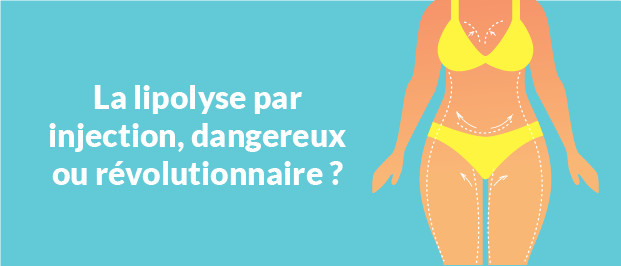Injection lipolysis, dangerous or revolutionary? Banned in April 2011 by the AFSSAPS, injection lipolysis now raises doubts in the minds of patients. Considered risky due to cases of complications, the legal context is still ongoing. The products we highlight do not pertain to lipolysis per se but significantly reduce cellulite and orange peel skin. Thus, in the absence of using another term, we will use the term lipolysis in this article. We tell you everything about this slimming technique that is widely discussed.
What is lipolysis?
The name may seem complicated, but the process is quite simple. Lipolysis, also known as lipodissolution, is a cosmetic medical slimming technique aimed at locally eliminating fat deposits and dissolving fat cells in our body. In simpler terms, lipolysis can help us reduce the appearance of that infamous orange peel or cellulite that bothers us so much; because let's be honest, who wouldn't dream of having a dream body this summer without breaking the bank? Indeed, lipolysis can treat the abdomen, hips, inner thighs, chin, and knees, catering to the needs and desires of everyone.
But then, why was it banned?
For lipolysis generates a phenomenon known as apoptosis (a state of cell death) which may have created complications leading to the state's decree. The products we are discussing in this article work differently as they influence the size of adipocytes (fat-storing cells).
An alternative to liposuction?
Much less expensive and taxing than liposuction, lipolysis does not require general anesthesia or a hospital stay. Liposuction, which is a true surgical procedure, is more suited for individuals with significant excess fat. Although lipolysis is effective on small fatty deposits, its effects cannot be compared to those of liposuction.
Who is it addressed to?
Liposuction is aimed at individuals who have small amounts of fat to reduce, both men and women who have localized small fatty deposits and wish to refine their silhouettes. The procedure itself does not result in weight loss, but it significantly improves the contour and firmness of the skin. This is why, in cases of true overweight, this technique is not indicated.
Is there only one type of lipolysis?
No, there are other types of lipolysis apart from injection (by laser, by cold, by ultrasound, and by radio frequencies). Each has its benefits and contraindications. Nevertheless, injection lipolysis remains the most effective and the most widely used.
How does lipolysis by injection work exactly?
It involves injecting a mixture of products into the fatty tissue that will help activate fat reduction. The injections are done using small needles that allow the product to be injected into the hypodermis. They are spaced a few weeks apart, and the session lasts less than an hour. The pain is moderate; however, for the most sensitive patients, it is possible to apply a numbing cream two hours before the injection (Yes, those of you who are more sensitive can be reassured!). Regarding the price, it varies but is approximately 300 to 500 euros per session for injection lipolysis, which is not reimbursed by Social Security. The laser method is more expensive, costing between 1000 to 1500 euros per session.
What products are used?
Different products can be used for injection lipolysis, depending on the treated area. We offer a range of effective products on our site that meet the necessary health conditions to ensure optimal results. These products are not directly related to lipolysis. Indeed, they affect the size of the adipocyte (fat storage cell) and have the effect of smoothing out irregularities on the surface of the dermis. They are specially formulated to treat cellulite depressions. We find: These products can be found in our 'slimming products' section. Important: Injection lipolysis must be performed by a qualified professional.
Are the results visible immediately?
No, expect to first have a slight "swelling", bruising, or redness. This will disappear in a few days. You will obtain the final and definitive result after 2 months. However, the results of injection lipolysis are clearly visible; 30% of localized fat is reduced with each session, which means that only 3 sessions are needed to achieve a truly significant result.
Are the results of lipolysis by injection permanent?
When you gain weight, the treated areas grow less quickly than other untreated parts of the body. There is a resistance in the areas that have undergone lipolysis, which limits weight gain; however, one cannot truly say that the result is permanent. When one gains weight, it is normal to gain weight everywhere, even if the treated area becomes more resistant than the rest.
Are there any contraindications?
Yes. Lipolysis by injection is not recommended for pregnant or breastfeeding women; but also for individuals suffering from coagulation disorders, allergies, and liver insufficiencies.
So, is lipolysis by injection dangerous?
As long as this is done by a professional who respects health regulations, that the products used are known and of safe origin (not forgetting the mention "CE label"), that the intervals between sessions are respected, and that the patient has no contraindications, there should be no problem. Injection lipolysis is a broad term; products that influence the size of adipocytes are now legally used and can provide satisfaction. Nevertheless, studies are still needed to better define the legal context of lipolysis (apoptosis or not).




































































